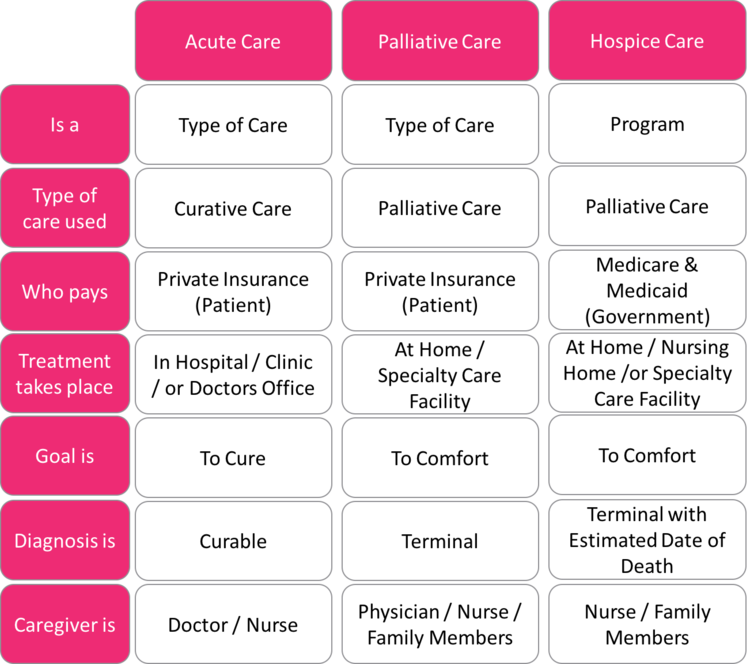We know what hospice care is, and we know what palliative care is. But do we really know what the difference is? Many people struggle to draw a distinction between the two so we decided to break it down for you in the easiest way possible.
Hospice Care and Palliative Care defined
Hospice Care – a program designed to provide palliative care and emotional support to the terminally ill in a home or home-like setting so that quality of life is maintained and family members may be active participants in care.
Palliative Care – a type of care intended to improve quality of life for both the patient and family by providing relief to symptoms and stress of a serious illness.
Notice here that Hospice Care is a program and Palliative Care is a type of care. This is an important distinction to keep in mind throughout the article.

Looking at the above definitions, you can probably start to grasp the main difference.
You might have noticed that palliative care is actually used to define hospice care.Upon first glance that might seem strange, but once you dig a little deeper, it starts to make more sense.
Palliative care is a type of care that is used to improve a patient’s quality of life by providing relief to the illness. Palliative care is NOT intended to cure a patient’s illness. Care that is intended to cure is called Acute Care.
Palliative Care and Acute Care.
So what category does Hospice Care fall under? Great question.
Hospice care is not a type of care. Hospice care is a government-funded program that uses palliative care to treat terminally ill patients in a home or home-like setting.
Simply put, hospice care is ALWAYS palliative care, but palliative care is NOT always hospice care.
If this is still confusing, hang with us. You’ll get it by the end of the article.
Hospice Care differs from Palliative Care for two reasons.
1. Hospice is a government funded program (no out of pocket costs for the patient or family).
2. To qualify for hospice, you must be terminal AND have an Estimated Date of Death.
Let’s Look at an Example
Philip is a 68 year-old male that has recently been diagnosed with lung cancer.
Philip needs to make a decision as to what he would like to do next. His doctor gives him two options of what they can do for him.
1. Chemotherapy and Curative Surgery (Acute Care)
2. Prescription of medication to help make Philip comfortable (Palliative Care)
Both of these options are paid for by the private insurance of Philip and his family.
Three months later, during Philip’s follow-up visit to his doctor, the doctor informs Philip that the cancer is growing and gives him a prognosis of 6 months to live.
Now everything changes because Philip is eligible for hospice. Once again, Philip is given two options for care.
1. Chemotherapy and Curative Surgery (Acute Care)
2. Hospice Care Program (Palliative Care)
Hospice Care is paid for by Medicare and does not cost Philip’s family anything.
Are you ready to break it down for other people now?
Hospice care and palliative care go hand in hand. The transition from palliative care to hospice care will continue to streamline as the hospice industry develops over the next few years. Was this helpful? Please share your thoughts below on anything we missed or something that helped you to draw a distinction between Hospice and Palliative Care.


